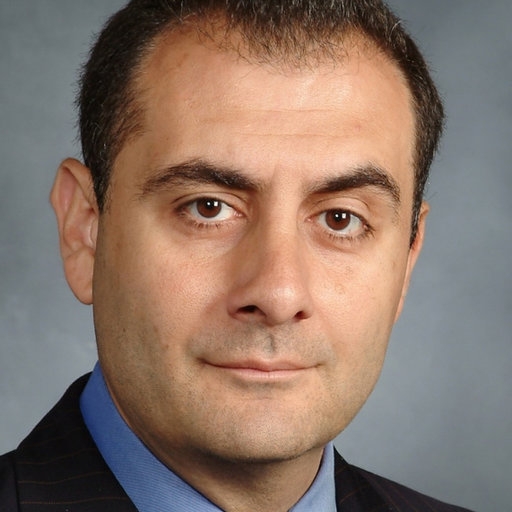
Dr. Manikkam Suthanthiran
New Endoscopic Radiofrequency Probe is Effective Treatment for Cancer Patients with Blocked Bile Ducts
A team of researchers from Weill Cornell Medical College have shown that a new endoscopic probe that burns away cancerous tissue can be an effective treatment for patients whose cancer is causing severe bile duct blockages, according to a new study published in the Journal of Oncology.
The study, "Safety and Efficacy of Radiofrequency Ablation in the Management of Unresectable Bile Duct and Pancreatic Cancer: a Novel Palliation Technique," is the first of its kind in the United States to test the efficacy and safety of the new endoscopic radiofrequency ablation probe in removing cancerous tissue blocking bile ducts.
"Endoscopic radiofrequency ablation technology is effective in widening bile ducts," said lead author Dr. Michel Kahaleh, chief of endoscopy and professor of clinical medicine at Weill Cornell. "Significantly, our comparison before and after treatment proves this."
Whereas chemotherapy and radiation are systemic treatments for cancer, the endoscopic probe is a tiny device that provides a localized therapy by burning away specific cancerous tissue.
The probe has been effectively used to remove tumors in the esophagus, rectum and liber, and the team set out to discern whether the same would be true for patients with biliary tract cancers, such as pancreatic cancer and bile duct cancer. Those patients often end up with tumor tissue or obstructions in their bile duct, resulting in jaundice, pain, inflammation or infection.
In their clinical study, the team used the probe on 20 patients last year who had biliary obstruction due to cancer, and found that the probe was effective in widening the bile duct, allowing bile to drain from the liver, through the body, to the small intestines. The technique also extended the efficacy of plastic or metal stents inserted after surgery, ensuring that patients' bile ducts remain obstruction-free for a longer period than before.
"This technique changes the treatment landscape for patients who have biliary tract cancers," Dr. Kahaleh said. "It will revolutionize the management of cancerous lesions of the bile duct by becoming a pretreatment used prior to stent replacement, or possibly help avoid a more invasive procedure."
The researchers hope that this technique could be used for other diseases related to biliary tract cancers, including stomach cancer and colon cancer.
Electronic Health Record System Continues to Improve Prescribing Safety Over Time
As part of the American Recovery and Reinvestment Act of 2009, the government is investing billions of dollars to encourage health care providers to use electronic health record systems. Whether ongoing use of these electronic systems improves patient care and safety in the ambulatory setting over time has remained an open question.
To address this issue, a team of physician-scientists from Weill Cornell Medical College have been tracking prescription errors by physicians in an adult ambulatory clinic before and after the switch from an older to a newer electronic health record system. The newer system provided extra guidance for prescribing, such as alerts notifying providers about use of inappropriate abbreviations that can result in patient harm, as well as checks for drug-allergy interactions, drug-drug interactions and duplicate drugs.

Dr. Rainu Kaushal
Researchers reviewed 1905 prescriptions from more than 900 patients two years after the newer system was implemented. At two years, rates of prescribing errors were very low (3.8 percent) and were significantly lower than rates one year prior and earlier.
"Our work shows that electronic prescribing improves patient safety in the ambulatory setting and that the maximal safety benefits may take time to accrue," said senior author Dr. Rainu Kaushal, the Frances and John L Loeb Professor of Medical Informatics and executive director of the Center for Healthcare Informatics and Policy at Weill Cornell. "These types of longitudinal studies are critically important to ensure that the benefits of these systems are optimized."
Researchers emphasized the importance of making improvements to electronic systems based on feedback from users.
"One important type of improvement was decreasing how often prescribing alerts were triggered, which increases physicians' attention to them," said lead author Dr. Erika Abramson, assistant professor of pediatrics and of public health at Weill Cornell and a pediatrician at NewYork-Presbyterian Hospital/Weill Cornell Medical Center. This was mentioned repeatedly in interviews with physicians in our study."
The errors found by researchers were generally unlikely to harm patients but could lead to inefficiencies, such as pharmacies having to call back to clarify prescriptions. Researchers plan on continuing their efforts by studying the effects of other electronic systems implemented in communities across New York state.
Additional co-authors are Dr. Adam Cheriff, Dr. Curtis Cole, Dr. Sameer Malhotra, Dr. S. Nena Osorio and Alison Edwards of Weill Cornell Medical College. The study was supported by funding from the Agency for Healthcare Research and Quality.
